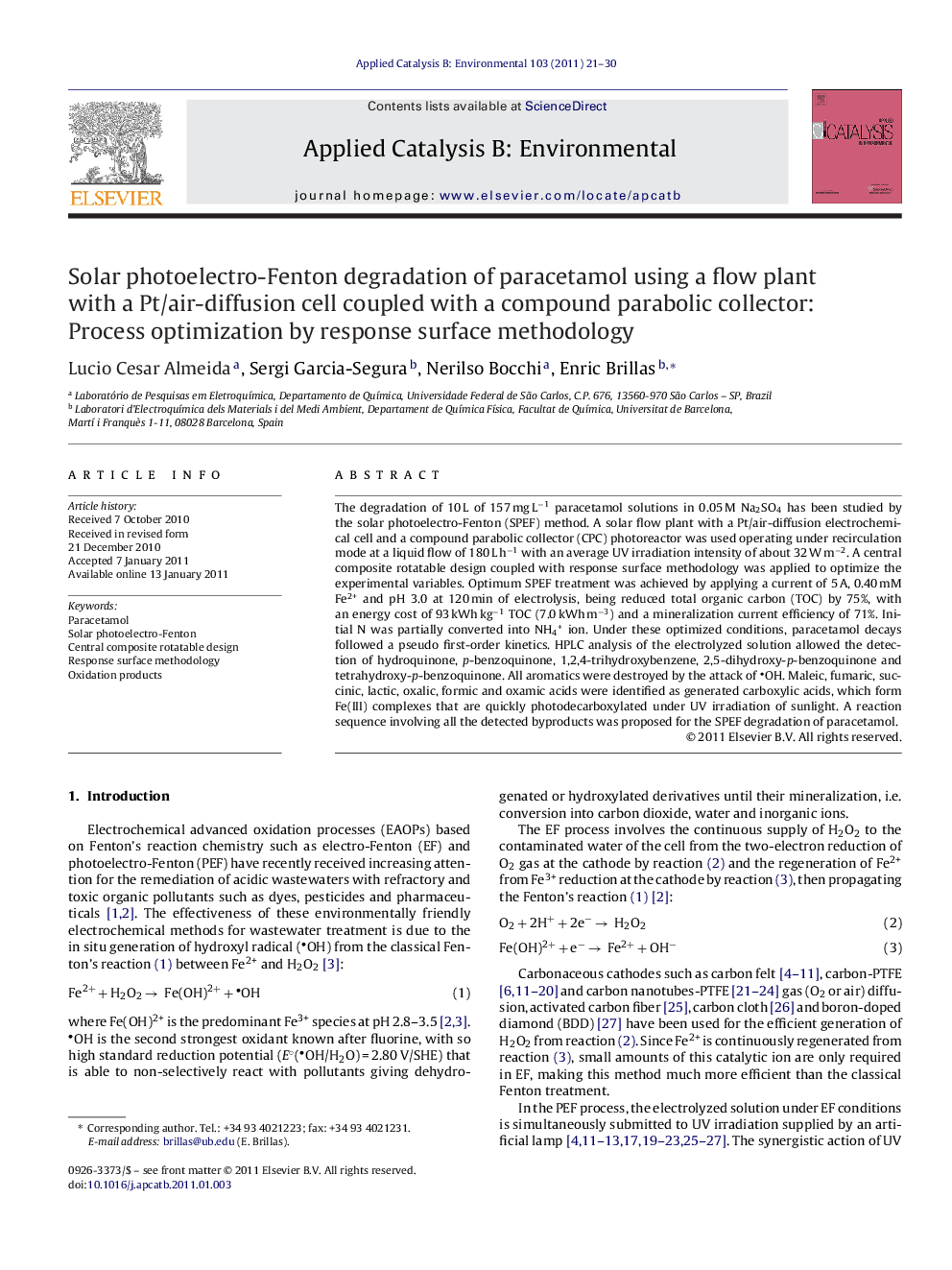| Article ID | Journal | Published Year | Pages | File Type |
|---|---|---|---|---|
| 46988 | Applied Catalysis B: Environmental | 2011 | 10 Pages |
The degradation of 10 L of 157 mg L−1 paracetamol solutions in 0.05 M Na2SO4 has been studied by the solar photoelectro-Fenton (SPEF) method. A solar flow plant with a Pt/air-diffusion electrochemical cell and a compound parabolic collector (CPC) photoreactor was used operating under recirculation mode at a liquid flow of 180 L h−1 with an average UV irradiation intensity of about 32 W m−2. A central composite rotatable design coupled with response surface methodology was applied to optimize the experimental variables. Optimum SPEF treatment was achieved by applying a current of 5 A, 0.40 mM Fe2+ and pH 3.0 at 120 min of electrolysis, being reduced total organic carbon (TOC) by 75%, with an energy cost of 93 kWh kg−1 TOC (7.0 kWh m−3) and a mineralization current efficiency of 71%. Initial N was partially converted into NH4+ ion. Under these optimized conditions, paracetamol decays followed a pseudo first-order kinetics. HPLC analysis of the electrolyzed solution allowed the detection of hydroquinone, p-benzoquinone, 1,2,4-trihydroxybenzene, 2,5-dihydroxy-p-benzoquinone and tetrahydroxy-p-benzoquinone. All aromatics were destroyed by the attack of OH. Maleic, fumaric, succinic, lactic, oxalic, formic and oxamic acids were identified as generated carboxylic acids, which form Fe(III) complexes that are quickly photodecarboxylated under UV irradiation of sunlight. A reaction sequence involving all the detected byproducts was proposed for the SPEF degradation of paracetamol.
Graphical abstractFigure optionsDownload full-size imageDownload as PowerPoint slideResearch highlights▶ The coupling of a Pt/air cell with a solar compound parabolic collector photoreactor allows a quick degradation of paracetamol. ▶ Experimental variables like current, Fe2+ content and pH can be optimized by response surface methodology. ▶ Response surfaces for total organic carbon, energy cost and mineralization current efficiency describe the solar photoelectro-Fenton process.▶ The attack of hydroxyl radical on paracetamol gives aromatic products that are oxidized to carboxylic acids.▶ Carboxylic acids form Fe(III) complexes that are photolyzed by UV irradiation of sunlight.
